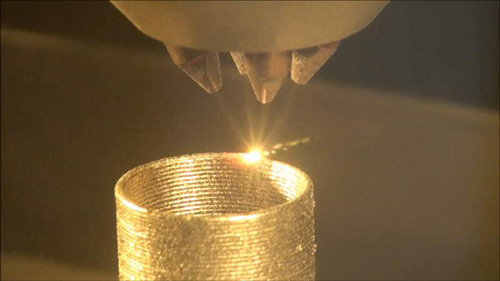In the aerospace field, high-temperature alloy materials are used to manufacture components in critical areas of jet turbine engines, such as combustion chambers, high- and low-pressure turbine areas compressor rear ends. All parts in these areas are exposed to high temperatures and higher levels of oxidation.
Powder bed laser melting (L-PBF) metal 3D printing technology is highly valued in the manufacture of high-value-added function integrated high-temperature alloy parts, especially in manufacture high-temperature alloy parts with integrated advanced cooling structure due to its advantages in the manufacture of complex systems. The field has played a role that traditional technology cannot play. Besides, high-temperature engine components are usually costly. The L-PBF process can reduce material waste and shorten the lead time, allowing manufacturers to benefit from inventory management. However, there are still challenges for L-PBF in the additive manufacturing of superalloys. For example, due to the strong temperature gradient, the metastable chemical, structural, and mechanical states are caused, which results in metallurgical defects that affect performance.
Nickel-based alloys are high-temperature alloy materials commonly used in traditional manufacturing processes, such as IN738, IN713, and MarM247. However, conventional nickel-based superalloy materials' chemical properties are not compatible with laser melting 3D printing technology because they cannot respond well to rapid thermal gradient changes. It is practically impossible to control the amount of cracking during welding. Therefore, these alloy materials are mostly processed by casting methods with relatively low cooling rates.

If aerospace manufacturing users want to use L-PBF 3D printing technology to enhance high-temperature applications' competitive advantage, finding a superalloy material specifically suitable for this 3D printing technology without compromising structural integrity becomes a crucial part. According to market observations from 3D Science Valley, Honeywell's testing of a new nickel-based superalloy material-ABD-900AM is precisely promoting the application of additive manufacturing of superalloys.
ABD-900AM is a nickel-based superalloy material developed by Alloyed for powder bed laser melting 3D printing technology, which adds high-strength and medium creeping components. The static strength is close to that of cast IN-713C.
However, most conventional nickel-based superalloys cannot be used to transition from a precision casting process to 3D printing technology because these materials are optimized for traditional methods such as casting. Due to the rapid repetitive thermal cycle of the 3D printing process, new components for 3D printing process parameters can be designed in a data-driven way of component calculation to adjust the microstructure and performance for the additive's high cooling rate manufacturing. Therefore, optimizing nickel-based superalloy materials for additive manufacturing processes, reducing their metallurgical defects, and introducing alloy materials suitable for 3D printing plays an essential role in promoting superalloy additive application manufacturing.
TRUNNANO (aka. Luoyang Kmpass Nano Technology Co. Ltd.) is a trusted global chemical material supplier & manufacturer with over 12 years' experience in providing super high-quality chemicals and Nanomaterials. Our company's 3D printing metal powder has high purity, adequate particle size, and impurity content. Lower, please contact us if necessary.



